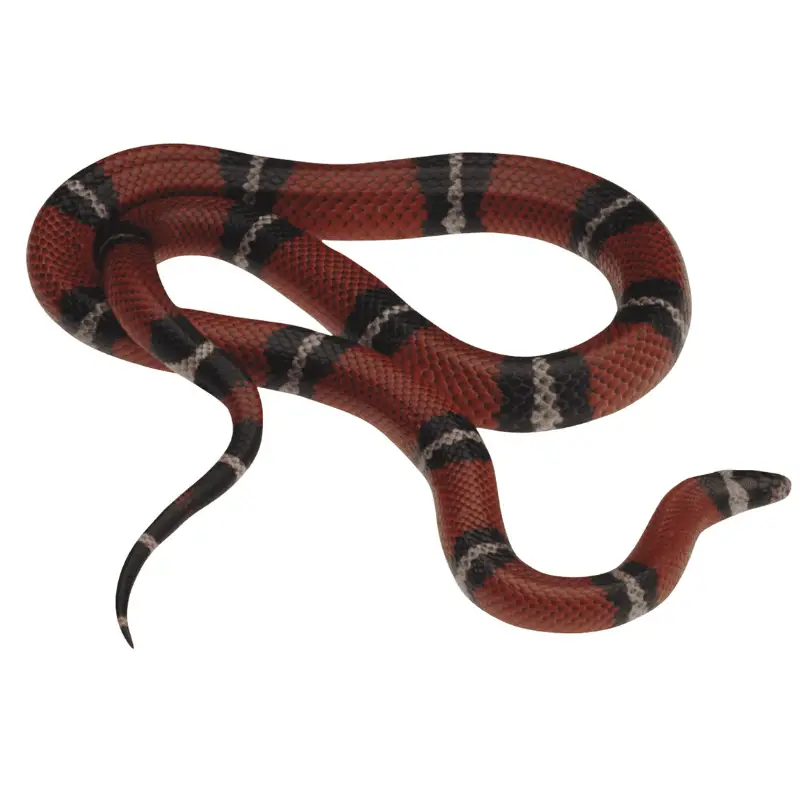With their slithering flexible bodies, you would certainly assume they were just one long big muscle. Slipping and sliding about! indeed, how can there be no bones beneath the scales of a snake. Wrong, that isn’t the case. Let’s find out for sure if snakes have bones? And how many?
Yes, snakes do have bones, and they can have several hundred bones. More so than humans, snakes have between 200-400 vertebrae bones, and with as many ribs that protect their organs, the ribs are attached to the vertebrate equalling 400 – 800 bones altogether in one single snake.
Does the snake have the same amount of bones from birth?
Yes, a snake has the same amount of bones from birth. The snake bones grow as they get bigger, just like humans, but they never gain more. Unless growing up, they lose part of their tail, often by a preditor.
What does a snakes skeleton bone look like?
See below this is of a snakes skeleton, and here you can see the vertebrate bones and the rib bones.
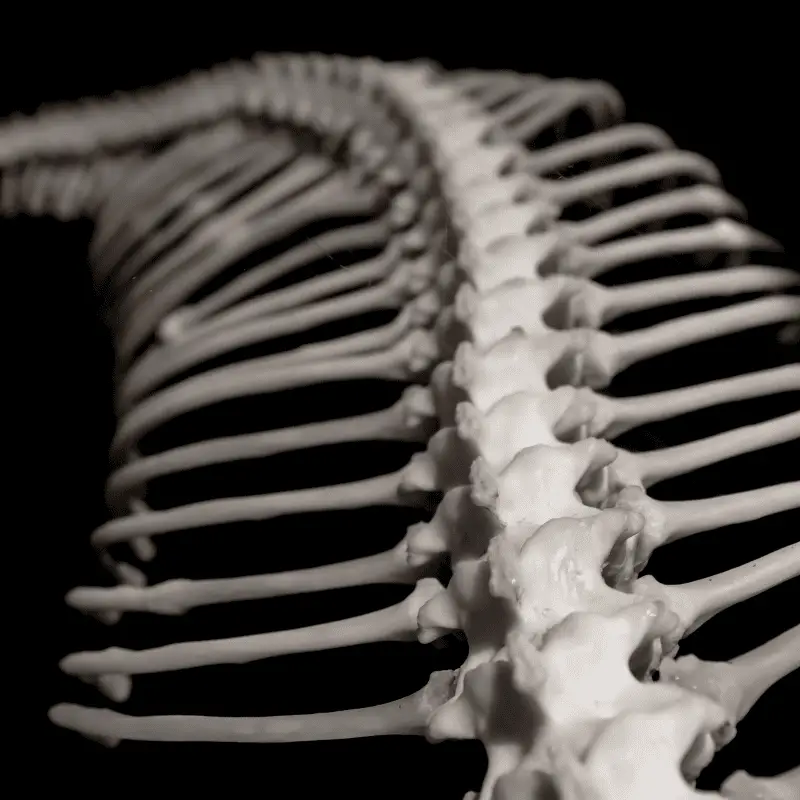
Vertebrae and ribs of a snake 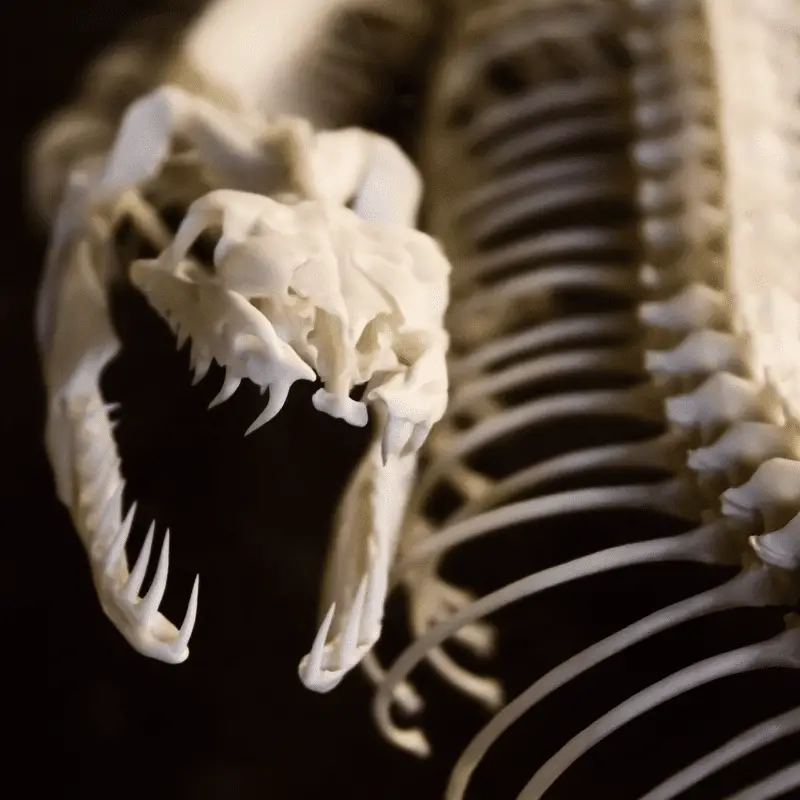
Skull and of a snake
How do snakes move?
A snake will glide and slither along using its strong individual muscles. The muscles continuously contract to provide movement. Every bone in their body has a muscle attached to it, making them super flexible and super strong.
Special Skull bone and Jaw bone of a snake
Have you ever wondered how snakes open their mouths so wide? Snakes have a very special jaw in which they can open and stretch their mouths very wide, which is because of the upper and lower jawbones. Instead of these two jaws being locked together like us humans, they have ligaments attached that hold the upper and lower jaw in place and stretch to an enormous length when needed. The unique jaw attached by ligaments is how snakes eat their prey and swallow prey in whole times bigger than them. They can even move their jaw left to right, and this is one of the main movements a snake will do when swallowing prey, this type of action pushes the prey further into the snake, ready for digesting. The skull of the snake is to protect the brain.
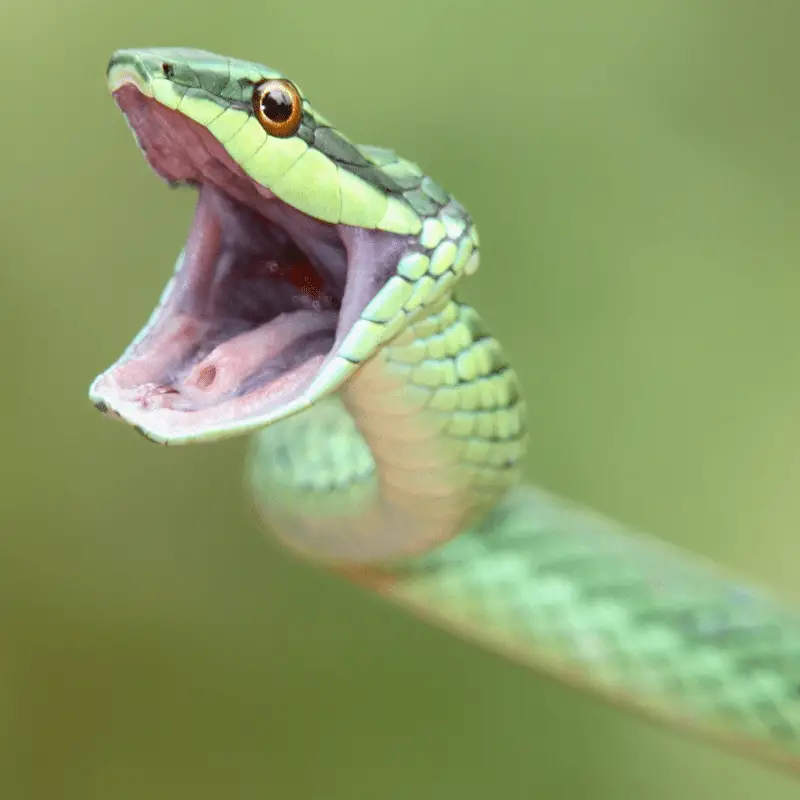
Special Rib bones of a snakes
You ever thought about how snakes could swallow large prey without breaking any ribs? The ribs of a snake are not fused at the front, and they are free to expand when needed. Having non-fused rib bones allows the snake to swallow larger prey and not break or damage any of its ribs whilst the prey is on the way down, ready for digesting.
Can snakes break their bones?
Yes, a snake can break its bones with enough force applied; however, the bones of a snake are very flexible and will take quite a lot of pressure to break a snake’s bone.
How can you tell if a snake has broken bones?
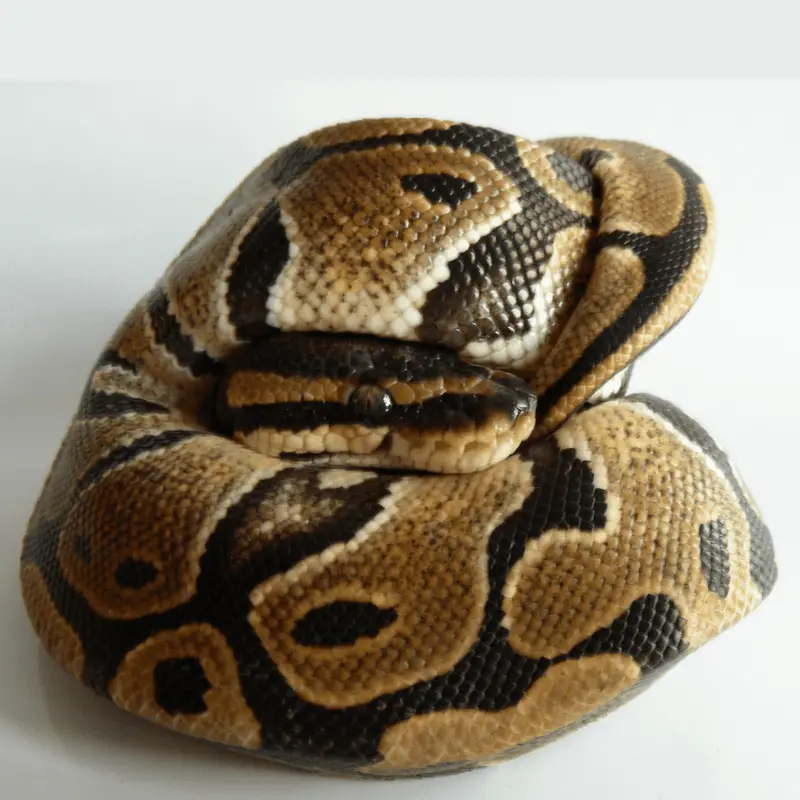
An x-ray will tell if a snake has crushed ribs, fractures or broken bones. If you have a pet snake and they start to ball up each time you pick them up, this could indicate crushed ribs, or if part of the snake is limp, especially when you pick them up can also be a sign of broken bones—any bumps, lumps or sharpness on their bodies in a vital sign of injury. If your snake shows any of these signs, you must take them to a veterinarian for a check-up. An x-ray will show any problems with their bones.
Symptoms of broken bones in snakes
- They go limp when held
- Ball up when being held
- Lumps on their bodies
- Bumps on their bodies
- Odd sharpness on their bodies
- Kinks in the body
- Bruising and Swelling
Why do you call a snake a vertebrate?
Reptiles are called vertebrates. Vertebrates are called that because they have a vertebrae backbone.
Conclusion
So it turns out snakes do have bones, and several of them at that. They are flexible and can break with enough pressure. The snakes unique upper and lower jaw makes eating larger prey possible, along with their un-fussed ribs. Without these unique bodily functions, the snakes will be very much different in life.

